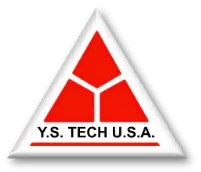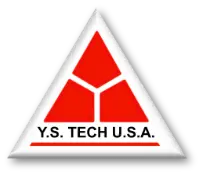Boosting EV Charging Lifespan Without Sacrificing Thermal Efficiency
What if you could boost your EV charging system’s lifespan by 50%—without sacrificing a single watt of thermal performance?
Most thermal engineers are stuck in a trade-off: chase performance and compromise durability, or build for longevity and throttle efficiency. But what if you didn’t have to choose?
With a few underused techniques, you can get the best of both worlds—ultra-fast charging that runs cooler and lasts longer.
Let’s be honest: EVs are everywhere—from daily drivers to high-output fleets from Tesla and Rivian. That means charging systems are under more pressure than ever to perform flawlessly over time. But how do you extend lifespan without overheating batteries or overhauling your design from scratch?
Here’s the upside: you can, and it’s easier than most engineers realize.
What you’ll uncover in this guide:
- Why overlooked thermal management tweaks can transform system longevity
- Two proven techniques to extend lifespan without compromising charging power
- Low-effort ways to integrate smarter cooling into current designs
- Costly thermal mistakes to avoid—before they undermine your system
The overlooked opportunity
Thermal engineers know the truth: rapid charging produces serious heat—and heat is a silent killer. But what if managing that heat just a bit smarter could unlock years of extra use?
With chargers pushing up to 350 kW, traditional air-cooled systems and basic liquid loops are hitting their limits. Meanwhile, top-performing teams are quietly upgrading to refrigerant-based cooling and dual-sided cooling designs. The result? Systems that last longer, run cooler, and keep pace with the fastest EVs on the road—even in midsummer heat or peak demand surges.
So why isn’t everyone doing it? In many cases, the problem isn’t cost—it’s inertia.
Technique 1: Refrigerant-based cooling = small swap, big payoff
Think swapping your cooling system is a big deal? It’s not. Moving from standard liquid cooling to refrigerant-based setups is more plug-and-play than most engineers assume.
Here’s why it works:
Refrigerant-based cooling routinely keeps battery temps 10–15°C below ambient, even during high-speed charging. It also improves thermal response time by 30–50% over basic liquid loops, which means fewer thermal spikes and less long-term degradation.
Some EV leaders are integrating these cooling loops with cabin HVAC systems—simplifying components and reducing maintenance. The integration smooths temperature gradients and minimizes stress on heat-sensitive parts.
Want to go even further? Add smart sensors. A small array of temperature monitors, placed properly, gives you a window into real-time system health—so you can fix issues before they become failures.
Technique 2: Dual-sided cooling + bidirectional flow = uniform cell health
Ever seen uneven cell aging in a battery pack? That’s the legacy of single-sided cooling—where internal cells run hotter than outer ones. Over time, those internal hotspots degrade faster.
Enter dual-sided cooling. By cooling both top and bottom surfaces, you cut thermal paths in half and reduce cell gradients from 5–7°C to just 2–3°C. That may sound small, but it dramatically slows wear and tear.
Want to make it bulletproof? Add bidirectional coolant flow. This distributes cooling evenly across every cell, reducing hot spots and extending the life of both the battery and charging hardware.
Optimize architecture for smart gains
The smartest thermal engineers aren’t just swapping materials—they’re rethinking how systems share resources. A growing number of manufacturers now link the EV battery cooling and cabin AC loops. The benefits?
- Fewer parts
- Simpler maintenance
- Shared thermal loads = higher system efficiency
Case in point: A Midwest EV charging station operator switched to refrigerant-based, dual-sided cooling. Their average mean time between failures jumped from 18 months to over 36 months. The secret? Not expensive hardware—just smarter integration and cooling control.
Mistakes to avoid (before they sabotage your system)
- Neglecting regular maintenance: Clogged loops or failing sensors = overheating.
- No performance monitoring: Thermal drift builds slowly—without data, you’ll miss it.
- Ignoring local climates: Overcooling wastes energy. Undercooling kills batteries.
- “Set it and forget it” mindset: Designs must evolve with usage patterns and tech.
Key takeaways
- Upgrade to refrigerant-based cooling for faster thermal response and longer system life
- Use dual-sided cooling and bidirectional flow to eliminate hotspots and extend cell performance
- Integrate battery + cabin cooling loops to reduce component count and maintenance needs
- Use real-time thermal monitoring to catch problems early and stay ahead of failures
Capitalize on hidden advantages
When you embrace these underused thermal strategies, you’re not just extending the life of your EV charging systems—you’re setting a new benchmark for performance and reliability. You gain the competitive edge, reduce operating costs, and improve uptime—without overhauling your design or your budget.
EV charging’s future isn’t just about speed—it’s about systems that endure.
Ready to outlast the competition with smarter cooling? Flip the switch.
FAQ: EV Charging Thermal Management
Q: What’s the most effective cooling tech for EV chargers?
A: Refrigerant-based systems. They cool 10–15°C below ambient and improve thermal control under high loads.
Q: Why dual-sided cooling?
A: It cuts thermal gradients in half, reducing wear from uneven cell temperatures.
Q: Can I extend system life without more complexity?
A: Yes—integrating cabin and battery cooling reduces parts and improves efficiency.
Q: What should I monitor for best thermal performance?
A: Leaks, sensor faults, and cooling flow. Use remote thermal monitoring to catch issues early.
A: Absolutely. Tune your system for hot vs. cold regions to avoid under- or overcooling.



